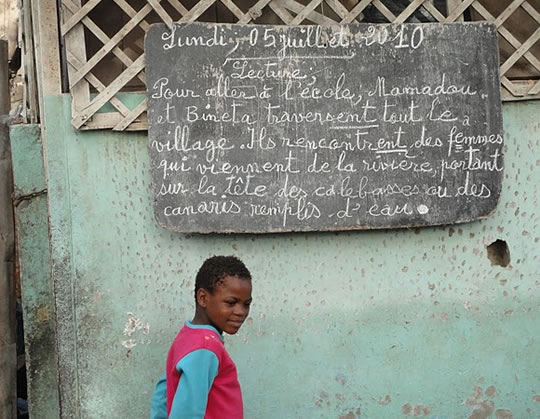About Cultural Connections

Critical Gaps
One of the critical gaps is curriculum materials about Islam in general, and more specifically about Islam in Africa. Michigan has the highest concentration of Muslims in the U.S. Islam is also a growing force in U.S. cities [both among youth whose families have lived there for generations and among recent arrivals] as well as in the African continent. Information about African Islam is limited in the public school and university curriculum.
Another critical gap is curriculum materials about the global conditions causing migration on the current scale. Legal and clandestine population movements today dwarf those during the colonial slave trade in the Americas. Information about the causes and consequences of that exodus in the public school and university curriculum is also limited.
A third critical gap is curriculum materials about literacy and language policies. There are growing numbers of languages represented in the public school and university classrooms across the U.S. The points of reference for determining what is literacy and who is literate are constantly shifting and will continue to do so. As the demographic changes redefine the language map of the country so will the need to explain language policies for the media, public services and schools. Information about how these policy choices have been made and implemented in Africa is limited in the public school and university curriculum.
A fourth critical gap is curriculum materials about African content in French language training. The majority of French language speakers are in Africa, not in France or Quebec. Most French language teachers in the U.S. know more about France and Quebec so they use graphic artwork, stories, videos, music, and crafts from those sites. Artifacts with supportive teaching materials from the places in Africa, where French language speakers are practicing and changing the language, are limited in the public school and university curriculum.
A fifth critical gap is curriculum materials about the ways in which popular cultures in Africa represent all of the above: the presence of Islam in Africa, the conditions and consequences of global migration, diverse definitions of literacy, the implementation of inclusive language policies, and the multiple uses of French in Africa. During our field trip to Senegal, the curriculum development team producing this web page collected novels, videos, audio tapes, crafts, museum reproductions and daily life utensils that can be used to discuss these topics in the classroom with supportive teaching materials.
We are also making an inventory of the African and Midwestern intellectual traditions investigating these critical gaps that have been excluded from the “official” curriculum over the last 60 years.